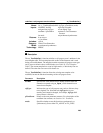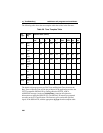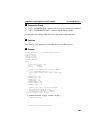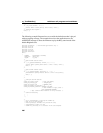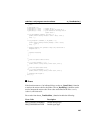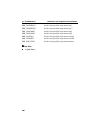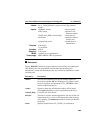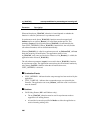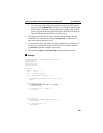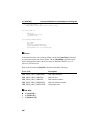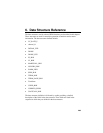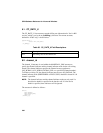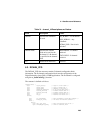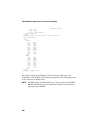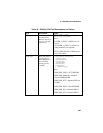
cc_WaitCall( ) sets up conditions for processing an incoming call
290
Parameter Description
(EV_SYNC) mode.
When and how the cc_WaitCall( ) function is issued depends on whether the
function is called in synchronous or asynchronous mode.
In synchronous mode, the cc_WaitCall( ) function cannot be stopped until
timeout expires or until cc_Restart( ) is called from another process. The
parameter crnptr will be assigned when cc_WaitCall( ) is terminated by the
event CCEV_OFFERED. If the cc_WaitCall( ) function fails, the call (and the
call reference number) will be released automatically.
When cc_WaitCall( ) is called in asynchronous mode, cc_ReleaseCall( ) will not
block the incoming call notification. The application needs to issue
cc_WaitCall( ) only once per line device. However, if cc_Restart( ) is called, the
application must reissue cc_WaitCall( ).
The call reference parameter (crnptr) is not used in the cc_WaitCall( ) function
in asynchronous mode. The application must retrieve the call reference number by
using the cc_GetCRN( ) function when the call notification event,
CCEV_OFFERED, is received.
!
! !
!
Termination Events
• CCEV_OFFERED - indicates that the setup message has been received by the
application.
• CCEV_TASKFAIL - indicates that a request/message was rejected by the
firmware. The application can use cc_Restart( ) after the event is received to
reset the channel.
!
! !
!
Cautions
• Call Waiting Feature (BRI and Windows only):
• The cc_WaitCall( ) function must be used in asynchronous mode to
support the call waiting feature.
• A board device must be specified in linedev to allow the application to
receive incoming waiting calls.




